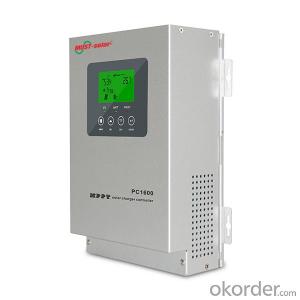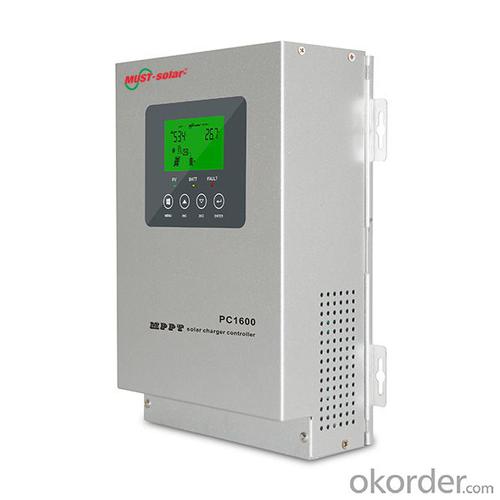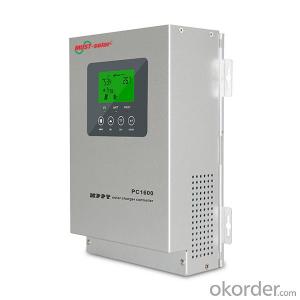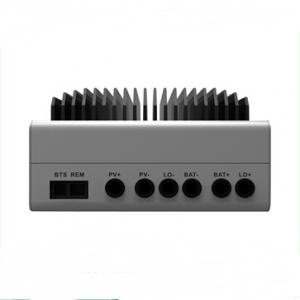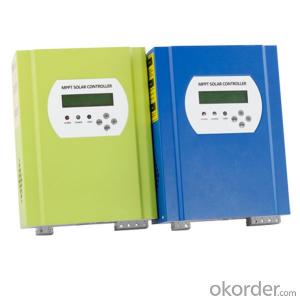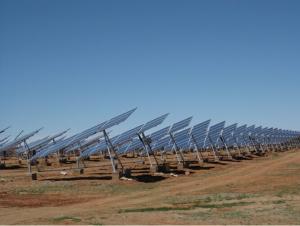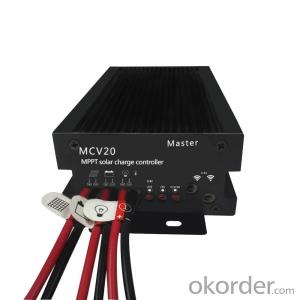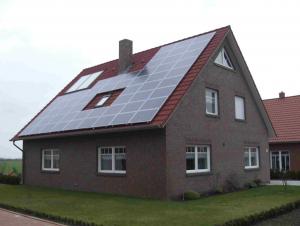1500V Solar Inverter MPPT Solar Charger Controller 2024 Best Selling New Design PC1600F Series
- Loading Port:
- China main port
- Payment Terms:
- TT OR LC
- Min Order Qty:
- 1 pc
- Supply Capability:
- 1000 pc/month
OKorder Service Pledge
OKorder Financial Service
You Might Also Like
The Features of PC1600F MPPT Solar Charger Controller :
·45A/60A MPPT solar charge controller
·24V/48V auto work
·PV Output :70v-145v
·Several seconds tracking speed
·High Tracking efficiency of 99%
·Multiphase synchronous rectification technology
·Peak conversion efficiency of 98%
·DSP processors architecture ensures high speed and performance
·Multifunction LCD displays system data and status
·Four stages charging optimizes battery performance
The Specification of PC1600F MPPT Solar Charger Controller :
| odel | PC16-4515F | PC16-6015F |
| Default Battery system Voltage | 24v/48vdc(adjustable) | |
| Charge Input | ||
| PV Open Circuit Voltage range | Operational max=145VDC temperature correct VOC | |
| Max PV input power(24v) | 1200W | 1600W |
| Max PV input power(48v) | 2400W | 3200W |
| Battery voltage | ||
| Nominal Voltage | 24V / 48V | |
| Absorption Voltage | 27.0V / 54.0V | |
| Refloat Voltage | 27.4V / 54.8V | |
| Float Voltage | 28.6V / 57.2V | |
| Low voltage protection point | 21.0V / 42.0V | |
| DC Output | ||
| Output Voltage | 22.0-28.6V / 44V-57.2V | |
| Rated Current | 45A continuous @40°C ambient | 60A continuous @40°C ambient |
| Warning for low voltage | 23.0V / 46.0V | |
| Cut off for low voltage | 21.6V / 43.0V | |
| Low voltage recovery | 26.0V / 46.0V | |
| Display | ||
| LED indication | Systematic operation, LV indication, LV protection, over charge protection, loads protection, short circuit protection | |
| LCD display(optional) | Charge voltage, charge current, voltage of storage battery, capacity of storage battery, output current | |
| Alarm Protections | 1.PV array short circuit protection, PV reverse polarity protection 2.Battery reverse polarity protection , Over charging protection 3.Output short circuit protection 4.Low voltage protection for storage battery | |
| General specification | ||
| Protection Level | In compliance with regulations of DIN EN60529 and standards of IP22 | |
| Charge mode | PWM ,constant current—constant voltage, function of automatic protection for storage battery | |
| Radiating mode | Fan cooling | |
| Working mode | General controller | |
| Efficiency | ≥98% | |
| Self -consumption | < 10mA | < 15mA |
| Environment | ||
| Environmental temperature | -10°C --55°C | |
| Ambient humidity | 0--90%,No condensation | |
| Altitude | ≤4500m | |
| Dimension | ||
| Unit size D*W*H(mm)/G.W(kg) | 257.1*167.6*82.9mm/3kg | |
| Package size D*W*H(mm)/G.W(kg) | 390*365*365mm(6pcs/carton)/19kg | |
Some Pictures of PC1600F MPPT Solar Charger Controller on display
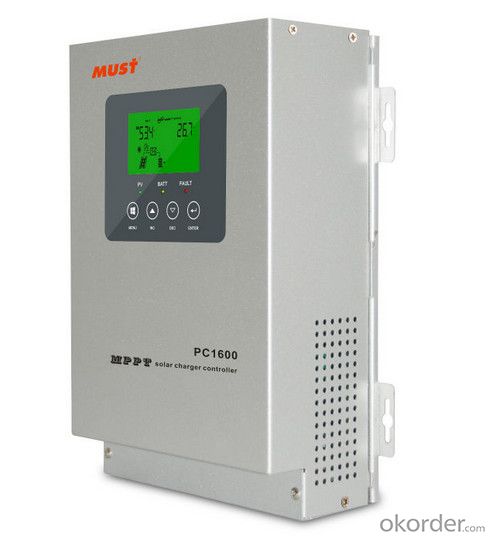
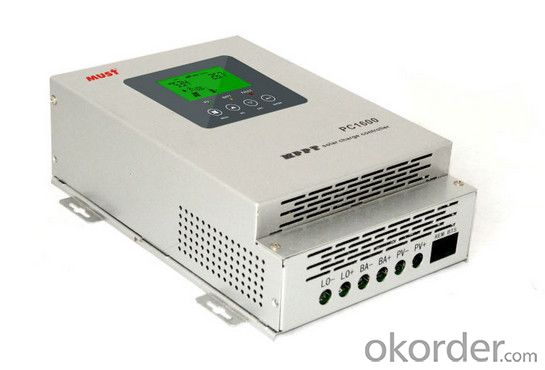
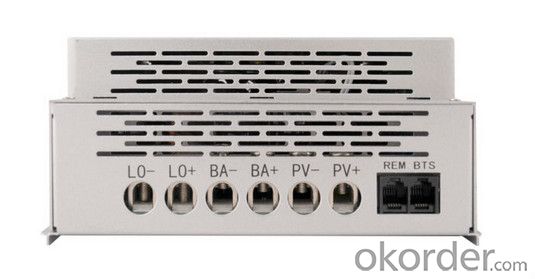
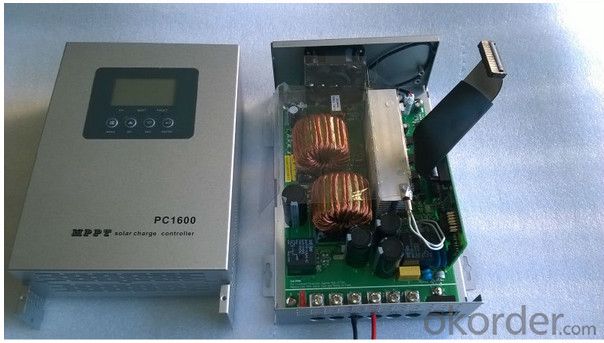
Warrenty
provides a 1~3 year limited warranty (“Warranty”) against defects in materials and workmanship for its Uninterruptible power supply, Power inverter/chargers, Solar charge controllers, Battery Products (“Product”).
The term of this Warranty begins on the Product(s) initial purchase date, or the date of receipt of the Product(s) by the end user, whichever is later. This must be indicated on the invoice, bill of sale, and/or warranty registration card submitted to MUST-Solar. This Warranty applies to the original MUST-Solar Product purchaser, and is transferable only if the Product remains installed in the original use location.
FAQ
1. How do I decide which system is right for me ?
For protection from long outages, include a generator or solar panels in your Must solar system. Shorter outages can be handled by a battery-only system.
2. Where my system will be installed ?
Must solar systems are usually wall-mounted near a home's main electrical (circuit breaker) panel.
3. How do I install my system ?
A must solar backup inverter is connected to a home electric system , we will supply detailed installation manual and videos for our customers .
4. How fast will my system respond to a power outage ?
Must solar inverters typically transfer to battery power in less than 16 milliseconds (less than 1/50th of a second).
- Q: Can a solar inverter be used for off-grid systems?
- Yes, a solar inverter can be used for off-grid systems. Off-grid systems are not connected to the utility grid and rely solely on renewable energy sources like solar panels. A solar inverter converts the direct current (DC) generated by the solar panels into alternating current (AC) which can be used to power appliances and devices in an off-grid system.
- Q: Can I connect solar panels directly to the grid without an inverter?
- No, you cannot connect solar panels directly to the grid without an inverter. An inverter is necessary to convert the direct current (DC) generated by the solar panels into alternating current (AC) that can be used by the electrical grid.
- Q: How does a solar inverter communicate with other devices in a solar power system?
- A solar inverter communicates with other devices in a solar power system through various communication protocols and interfaces. One common method is through wired connections using communication interfaces such as RS485 or Ethernet. These interfaces allow the inverter to establish a direct connection with other devices such as solar panels, batteries, and monitoring systems. In addition to wired connections, wireless communication methods are also used. This includes technologies like Wi-Fi, Zigbee, or Bluetooth, which enable the inverter to connect with other devices within a certain range. Wireless communication is often used for monitoring and control purposes, allowing users to remotely access and manage their solar power system. The communication between the solar inverter and other devices is crucial for the overall performance and efficiency of the solar power system. It enables the inverter to receive important data from the solar panels, such as voltage, current, and temperature, which is necessary for optimal power conversion. The inverter can then adjust its operations based on this information to maximize the power output and ensure system safety. Furthermore, communication with other devices like batteries allows the solar inverter to manage the charging and discharging cycles, optimizing energy storage and utilization. This ensures that excess energy generated by the solar panels is efficiently stored in the batteries and used during periods of low sunlight. Overall, the communication capabilities of a solar inverter play a crucial role in the integration and coordination of different components within a solar power system. It enables efficient power conversion, monitoring, and control, ultimately maximizing the performance and benefits of solar energy generation.
- Q: How do you calculate the maximum power point tracking efficiency for a solar inverter?
- To calculate the maximum power point tracking (MPPT) efficiency for a solar inverter, you need to compare the actual power output of the inverter to the maximum power available from the solar panels. The formula for MPPT efficiency is: MPPT Efficiency = (Actual Power Output / Maximum Power Output) * 100 The actual power output is the power being delivered by the inverter to the load, which can be measured using a power meter. The maximum power output is the highest power that can be generated by the solar panels, which can be determined by conducting a performance test or referring to the manufacturer's specifications. By dividing the actual power output by the maximum power output and multiplying the result by 100, you can calculate the MPPT efficiency as a percentage. This efficiency metric helps evaluate how effectively the inverter is tracking the maximum power point of the solar panels, ensuring optimal energy conversion and utilization.
- Q: How does a solar inverter handle voltage fluctuations in the grid?
- A solar inverter handles voltage fluctuations in the grid by continuously monitoring the grid voltage. When the voltage exceeds or drops below the acceptable range, the inverter adjusts the power output of the solar panels accordingly. It stabilizes the voltage by regulating the flow of electricity from the solar panels, ensuring a consistent and safe supply of power to the grid.
- Q: Can a solar inverter be used with different solar panel brands?
- Yes, a solar inverter can be used with different solar panel brands as long as they are compatible in terms of voltage, current, and power ratings. The inverter should support the specific voltage and power requirements of the solar panels for optimal performance and efficiency.
- Q: Can a solar inverter be used in remote areas?
- Yes, a solar inverter can be used in remote areas. Solar inverters are commonly used in off-grid systems to convert the DC power generated by solar panels into AC power that can be used for various applications. These systems are particularly beneficial in remote areas where access to the electricity grid is limited or non-existent. By harnessing solar energy, a solar inverter can provide reliable and sustainable power to remote communities, powering homes, schools, clinics, and other essential infrastructure.
- Q: Can a solar inverter be used for both grid-tied and off-grid systems?
- Yes, a solar inverter can be used for both grid-tied and off-grid systems. However, it is important to note that there are different types of solar inverters designed specifically for each system. Grid-tied inverters are designed to convert DC power generated by solar panels into AC power and feed it into the grid, while off-grid inverters are designed to convert DC power into AC power for use in standalone systems not connected to the grid.
- Q: Can a solar inverter be used with concentrated photovoltaic systems?
- Yes, a solar inverter can be used with concentrated photovoltaic systems. Concentrated photovoltaic systems use lenses or mirrors to concentrate sunlight onto high-efficiency solar cells. The solar inverter's role remains the same in converting the DC power generated by the concentrated photovoltaic system into AC power that can be used for various applications.
- Q: Can a solar inverter be used in extreme weather conditions?
- Yes, solar inverters are designed to withstand extreme weather conditions. They are built to be durable and resistant to factors such as temperature fluctuations, humidity, and harsh weather elements. However, it is always recommended to consult the manufacturer's guidelines to ensure proper installation and protection measures are in place for specific weather conditions.
Send your message to us
1500V Solar Inverter MPPT Solar Charger Controller 2024 Best Selling New Design PC1600F Series
- Loading Port:
- China main port
- Payment Terms:
- TT OR LC
- Min Order Qty:
- 1 pc
- Supply Capability:
- 1000 pc/month
OKorder Service Pledge
OKorder Financial Service
Similar products
Hot products
Hot Searches
Related keywords
